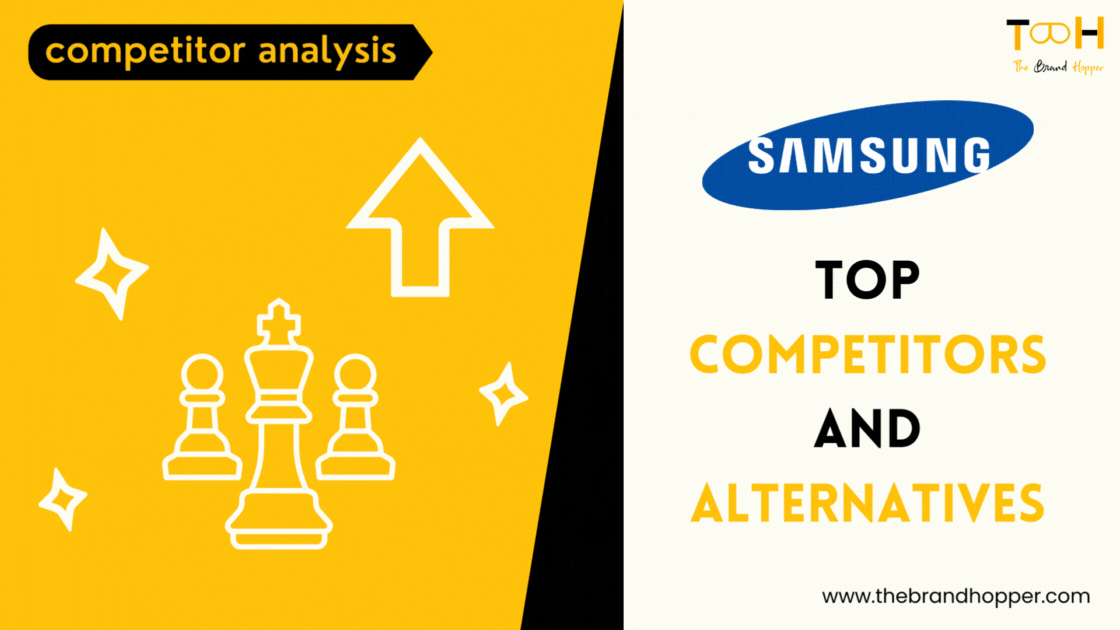Samsung. The name itself conjures images of sleek smartphones, brilliant televisions, and cutting-edge home appliances. But Samsung’s story stretches far beyond the realm of consumer electronics. It’s a tale of transformation, relentless innovation, and a pivotal role in shaping the technological landscape we experience today.
Samsung’s roots trace back to 1938, South Korea, where Lee Byung-chul embarked on a humble journey with a trading company. This seed of ambition blossomed over the decades, witnessing Samsung’s diversification into textiles, food processing, and financial services. The company’s focus on industrialization after the Korean War proved instrumental, mirroring South Korea’s own rise as an economic powerhouse.
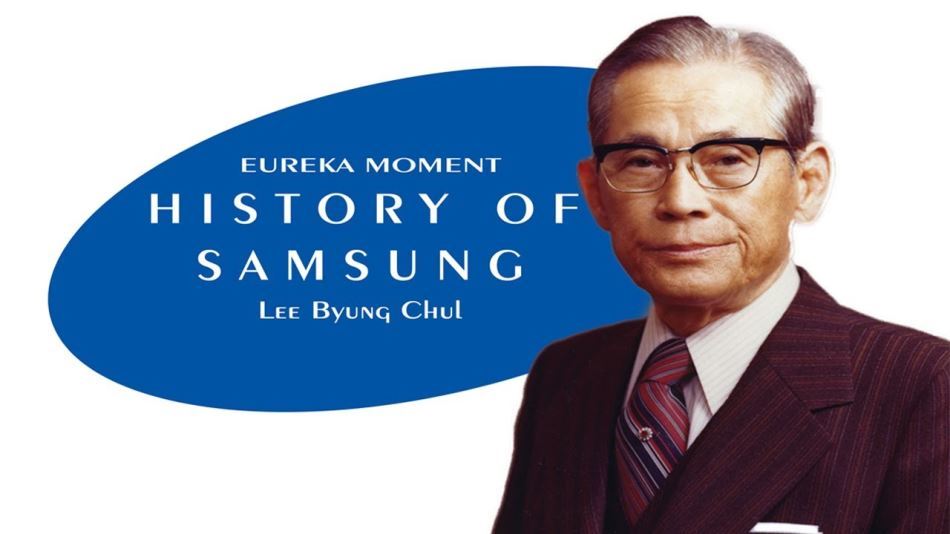
The turning point arrived in the 1960s, when Samsung set its sights on the burgeoning electronics industry. This marked the birth of Samsung Electronics, the company’s crown jewel that would propel it to global prominence. From humble beginnings producing black-and-white televisions, Samsung embarked on a relentless pursuit of innovation. By the late 20th century, Samsung had established itself as a leader in memory chips, a technology that would become the backbone of the digital revolution.
The new millennium witnessed Samsung’s meteoric rise in consumer electronics. Their sleek and feature-rich smartphones, spearheaded by the iconic Galaxy line, captured the imagination of consumers worldwide. Samsung’s dominance extended to televisions, where their cutting-edge QLED and Neo QLED displays redefined the home entertainment experience. Home appliances, from smart refrigerators to connected washing machines, showcased Samsung’s commitment to seamlessly integrating technology into everyday life.
Beyond the realm of consumer electronics, Samsung remains a hidden powerhouse. Samsung Semiconductor is the world’s largest memory chip manufacturer, supplying the very foundation for countless electronic devices. Their involvement extends to aerospace, engineering, and biopharmaceuticals, highlighting the company’s vast and ever-expanding influence.
Samsung’s story is one of unwavering ambition and strategic brilliance. They’ve transformed from a local trading company to a global conglomerate, a name synonymous with cutting-edge technology and quality. As Samsung ventures into the uncharted territories of artificial intelligence, robotics, and the Internet of Things, one thing remains certain: their quest to shape the future of technology shows no signs of abating.
Top Competitors and Alternatives of Samsung
Samsung, a multinational conglomerate headquartered in South Korea, operates in various sectors, including electronics, construction, finance, and more. Its primary competitors and alternatives vary across its different business divisions. Let’s delve into each major sector:
Consumer Electronics:
Samsung’s primary competitors in consumer electronics include:
1. Apple
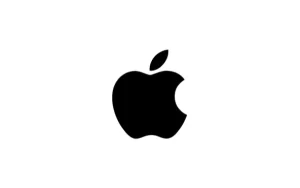
Website – https://www.apple.com/
Apple stands as Samsung’s fiercest competitor in the consumer electronics arena. Both companies go head-to-head across a wide range of products, from smartphones and laptops to tablets and smartwatches. Their rivalry is legendary, fueled by a constant push to outdo each other in terms of design, performance, and user experience.
Apple’s approach centers around a tightly controlled ecosystem. Their iPhones seamlessly integrate with Macs, iPads, and Apple Watches, creating a user experience praised for its intuitiveness and fluidity. Apple focuses on premium design and high-quality materials, often setting trends that Samsung and other competitors follow.
Here’s a table summarizing the key points of competition:
| Feature | Apple | Samsung |
| Product Focus | Premium, High-End |
Varied Price Points (Flagship to Budget)
|
| Operating System | iOS (Closed Ecosystem) |
Android (Open Ecosystem)
|
| User Experience | Focus on Simplicity and Integration |
More Customization Options
|
| Marketing Strategy | Brand Loyalty and Exclusivity |
Focus on Innovation and Features
|
2. Sony

Website – https://electronics.sony.com/
While not the head-to-head competitor it once was, Sony remains a significant player in consumer electronics, challenging Samsung in specific segments. Sony’s brand recognition and reputation for quality are undeniable assets, particularly for consumers seeking a premium experience.
Sony excels in areas like televisions and audio equipment. Their BRAVIA OLED TVs boast exceptional picture quality, while their audio products, encompassing headphones, speakers, and home theater systems, are renowned for their immersive sound experiences. Sony also caters to niche markets, offering high-end cameras favored by professional photographers and audiophiles, and their PlayStation gaming console remains a dominant force in the entertainment industry.
Here’s a breakdown of how Sony competes with Samsung:
| Feature | Sony | Samsung |
| Brand Identity | Legacy Brand, Premium Quality |
Innovative Leader, Diverse Products
|
| Product Focus | High-End TVs, Audio Equipment, Cameras |
Smartphones, TVs, Home Appliances
|
| Target Market | Discerning Consumers, Audiophiles, Gamers |
Tech Enthusiasts, Budget-Conscious
|
| Marketing Strategy | Heritage & Innovation Blend |
Focus on Cutting-Edge Technology
|
3. LG Electronics
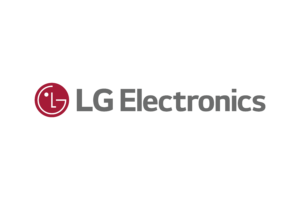
Website – https://www.lg.com/global/
LG Electronics stands as Samsung’s closest competitor within South Korea and a major rival on the global consumer electronics stage. Both companies offer a vast array of products, often competing directly in smartphones, televisions, and home appliances. Their rivalry pushes them to innovate and deliver feature-rich options at competitive prices.
LG Electronics shines in the home appliance market. Their refrigerators boast innovative features like InstaView technology for a peek inside without opening the door, while their washing machines are known for their energy efficiency and advanced cleaning cycles. LG also holds its own in the television segment, with their OLED technology offering deep blacks and vibrant colors to rival Samsung’s QLED displays.
Here’s a table outlining the key areas of competition between LG and Samsung:
| Feature | LG Electronics | Samsung |
| Strengths | Home Appliances, TVs (OLED Technology) |
Smartphones, TVs (QLED Technology)
|
| Marketing Strategy | Focus on Value and Innovation |
Focus on Premium Design and Features
|
| Target Market | Budget-Conscious Consumers, Tech Savvy |
Tech Enthusiasts, Design Aficionados
|
| Brand Identity | Reliable and Feature-Rich |
Innovative and Cutting-Edge
|
4. Huawei
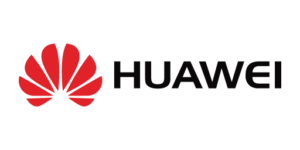
Website – https://www.huawei.com/en/
Huawei’s meteoric rise in recent years has positioned it as a formidable competitor to Samsung in the consumer electronics arena. Prior to facing US sanctions, Huawei aggressively expanded its smartphone market share, becoming a major challenger to Samsung’s dominance. Their smartphones boasted innovative camera technology, powerful processors, and competitive pricing, appealing to a wide range of consumers.
Beyond smartphones, Huawei competed with Samsung in other areas. Their smartwatches offered robust health and fitness tracking features, while their laptops garnered praise for sleek designs and long battery life. Huawei also dabbled in tablets and true wireless earbuds, showcasing their ambition to be a one-stop shop for consumer electronics needs.
Here’s a table highlighting the competitive landscape between Huawei and Samsung:
| Feature | Huawei | Samsung |
| Focus Pre-Sanctions | Smartphones (Camera, Performance) |
Smartphones (Display, Features)
|
| Target Market | Value-Conscious, Tech-Savvy Consumers |
Tech Enthusiasts, Design Aficionados
|
| Marketing Strategy | Innovation at Competitive Prices |
Premium Design and Cutting-Edge Tech
|
| Current Status | Limited Operations Due to US Sanctions |
Market Leader in Consumer Electronics
|
5. Xiaomi
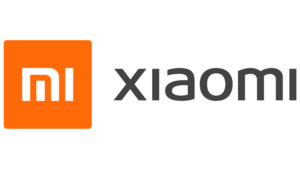
Website – https://www.mi.com/global/
In the realm of affordable consumer electronics, Xiaomi has emerged as a fierce competitor to Samsung. Xiaomi’s strategy revolves around offering feature-rich smartphones and other electronics at aggressive price points, appealing to budget-conscious consumers. Their online-focused sales model further streamlines costs, allowing them to undercut Samsung’s offerings.
Xiaomi’s primary battleground with Samsung lies in the smartphone market. They produce smartphones with high-resolution displays, powerful processors, and capable cameras, often mirroring features found in Samsung’s flagships at a fraction of the cost. Xiaomi’s MIUI user interface offers a customizable experience, attracting a tech-savvy user base seeking an alternative to Samsung’s One UI.
Here’s a breakdown of how Xiaomi competes with Samsung:
| Feature | Xiaomi | Samsung |
| Price Point | Budget-Friendly |
Varied Price Points (Flagship to Budget)
|
| Marketing Strategy | Online Sales Focus, Value for Money |
Brand Recognition, Feature Innovation
|
| Target Market | Budget-Conscious Consumers, Tech Enthusiasts |
Tech Enthusiasts, Design Aficionados
|
| Product Focus | Smartphones (Value Proposition) |
Diversified Product Range
|
Semiconductors:
1. Intel
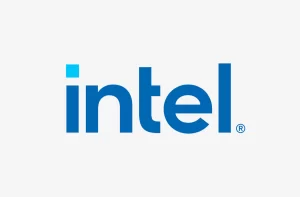
Website – https://www.intel.com/
While Samsung and Intel may not directly compete for consumers’ wallets in the way they do with smartphones or TVs, they are fierce rivals in the world of semiconductors, the hidden engines that power modern electronics.
Intel’s core strength lies in central processing units (CPUs), the brains of computers. For decades, Intel dominated the CPU market with its x86 architecture, powering personal computers and laptops. Samsung, on the other hand, excels in memory chips, the workhorses responsible for storing data on devices. Their dominance in DRAM (Dynamic Random-Access Memory) and NAND flash memory makes them a vital supplier for countless electronic devices.
The competition between Intel and Samsung extends beyond their core products. Both companies are heavily invested in research and development, constantly pushing the boundaries of chip manufacturing technology. They compete to develop the most advanced fabrication processes (measured in nanometers), which translates to smaller, faster, and more energy-efficient chips. Additionally, both companies are now venturing into the foundry business, where they manufacture chips designed by other companies.
Here’s a table summarizing the key areas of competition between Intel and Samsung in the semiconductor industry:
| Feature | Intel | Samsung | |
| Core Strength | CPUs (Central Processing Units) |
Memory Chips (DRAM, NAND Flash)
|
|
| Market Focus | Personal Computers, Laptops |
Mobile Devices, Consumer Electronics
|
|
| Foundry Business | Expanding Foundry Services |
Established Foundry Business
|
|
| R&D Focus | Advanced CPU Architecture |
Advanced Memory Technology, Fabrication
|
2. TSMC (Taiwan Semiconductor Manufacturing Company)
![]()
Website – https://www.tsmc.com/english
In the arena of semiconductor manufacturing, Samsung faces its most formidable competitor in TSMC, the Taiwan Semiconductor Manufacturing Company. TSMC doesn’t manufacture its own chips; instead, they act as a foundry, building chips designed by other companies. This “fabless” model allows them to focus solely on the complex and expensive process of chip fabrication, achieving unparalleled efficiency and technological leadership.
TSMC’s dominance lies in their cutting-edge manufacturing processes. They consistently pioneer the transition to smaller chip sizes (measured in nanometers), resulting in denser, faster, and more power-efficient chips. This technological edge makes them the go-to supplier for many leading tech companies, including Apple, AMD, and Nvidia, for their most advanced processors.
While Samsung also possesses strong foundry capabilities, they haven’t been able to match TSMC’s relentless pursuit of miniaturization. This puts them at a disadvantage when it comes to securing contracts for the most advanced chip designs. However, Samsung remains a significant player, particularly in memory chip production (DRAM and NAND flash), where they compete head-to-head with TSMC.
Here’s a table highlighting the key areas of competition between TSMC and Samsung:
| Feature | TSMC | Samsung |
| Business Model | Fabless Foundry (Chip Manufacturing) |
Integrated Device Manufacturer (IDM)
|
| Market Focus | High-End Processors (Foundry for Others) |
Mobile Processors, Memory Chips (Own Designs & Foundry)
|
| Strength | Cutting-Edge Fabrication Processes |
Memory Chip Production, Diversified Products
|
| Challenge | Maintaining Fabrication Leadership |
Catching Up in Fabrication Technology
|
3. Qualcomm
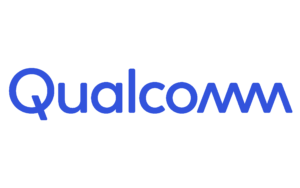
Website – https://www.qualcomm.com/
While Samsung boasts its own in-house chip fabrication capabilities, Qualcomm takes a different approach in the semiconductor industry, acting as a fabless chip designer. They design the blueprints, or intellectual property (IP), for processors and modems found in smartphones and other mobile devices. These designs are then sent to foundries like TSMC or Samsung for actual manufacturing.
This creates a unique competitive dynamic. Samsung competes with Qualcomm in the mobile processor market, as Samsung develops its own Exynos line of processors to power its Galaxy smartphones. However, Samsung also manufactures chips designed by Qualcomm, acting as a foundry in this instance. Qualcomm’s focus lies on innovation and licensing their designs to various manufacturers, while Samsung aims to be a powerhouse in both chip design and fabrication.
Here’s a table summarizing the competition between Qualcomm and Samsung in semiconductors:
| Feature | Qualcomm | Samsung |
| Business Model | Fabless Chip Designer (IP Licensing) |
Integrated Device Manufacturer (IDM)
|
| Market Focus | Mobile Processors (Snapdragon Line) |
Mobile Processors (Exynos Line), Foundry Services
|
| Strength | Innovation, Licensing Model |
Diversified Chip Production (Design & Manufacturing)
|
4. NVIDIA
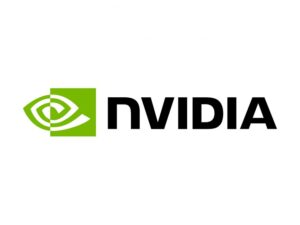
Website – https://www.nvidia.com/
In the realm of graphics processing units (GPUs), the brains behind high-performance computing and gaming, NVIDIA emerges as a significant competitor to Samsung in the semiconductor industry.
Similar to Qualcomm, NVIDIA adopts a fabless model. They design the blueprints for powerful GPUs used in gaming PCs, workstations, and artificial intelligence applications. These designs are then sent to foundries like TSMC or Samsung for mass production.
The competition between NVIDIA and Samsung plays out on two levels. First, they compete indirectly as Samsung manufactures some of NVIDIA’s high-end GPUs. Second, Samsung itself designs and manufactures its own graphics processing units for use in their Exynos mobile processors. While not as powerful as NVIDIA’s dedicated gaming GPUs, they cater to the mobile gaming market.
Here’s a table summarizing the competition between NVIDIA and Samsung in semiconductors:
| Feature | NVIDIA | Samsung |
| Business Model | Fabless Chip Designer (IP Licensing) |
Integrated Device Manufacturer (IDM)
|
| Market Focus | High-Performance GPUs (Gaming, AI) |
Mobile GPUs (Integrated with Exynos Processors)
|
| Strength | Cutting-Edge GPU Architecture |
Diversified Chip Production (Design & Manufacturing)
|
| Competition | Indirect (Foundry for NVIDIA GPUs) |
Direct (Mobile GPU Market)
|
Home Appliances:
1. LG Electronics

Website – https://www.lg.com/global/
LG Electronics stands as one of Samsung’s fiercest competitors in the home appliance market. Both companies offer a vast array of appliances, from refrigerators and washing machines to ovens and dishwashers, often going head-to-head for consumer attention. Their rivalry pushes them to innovate and deliver feature-rich appliances at competitive prices.
LG Electronics shines in specific areas within the home appliance segment. They’re known for their innovative refrigerators, like models with InstaView technology that allows a peek inside without opening the door. LG washing machines boast energy efficiency and advanced cleaning cycles, while their ThinQ platform allows for smart home integration. This focus on innovation and convenience positions them as a strong competitor to Samsung’s feature-packed appliances.
Here’s a table outlining the key areas of competition between LG and Samsung in home appliances:
| Feature | LG Electronics | Samsung |
| Strengths | Refrigerators (InstaView Technology) |
Washing Machines, Smart Features
|
| Marketing Strategy | Focus on Value and Innovation |
Focus on Premium Design and Features
|
| Target Market | Budget-Conscious Consumers, Tech Savvy |
Tech Enthusiasts, Design Aficionados
|
| Brand Identity | Reliable and Feature-Rich |
Innovative and Cutting-Edge
|
2. Whirlpool Corporation
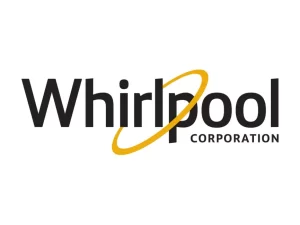
Website – https://www.whirlpoolcorp.com/
While Samsung has carved a niche for itself in high-tech home appliances, Whirlpool Corporation remains a formidable competitor, leveraging its brand legacy and focus on core functionality. They offer a wide range of appliances across various price points, catering to budget-conscious consumers seeking reliable performance.
Whirlpool shines in specific appliance categories, like laundry and cooking. Their washing machines are known for durability and efficient cleaning, while their refrigerators boast innovative features like spill-proof shelves and long-lasting freshness technologies. Whirlpool caters to a broader audience compared to Samsung, offering a balance between affordability and essential features.
Here’s a table summarizing the key areas of competition between Whirlpool and Samsung in home appliances:
| Feature | Whirlpool Corporation | Samsung |
| Brand Identity | Legacy Brand, Reliability |
Innovative Leader, Cutting-Edge Tech
|
| Price Range | Varied (Budget-Friendly to Mid-Range) |
Varied (Mid-Range to Premium)
|
| Target Market | Value-Conscious Consumers |
Tech Enthusiasts, Design Aficionados
|
| Focus | Core Functionality, Durability |
Innovation, Smart Features
|
3. Haier

Website – https://www.haier.com/global/
In the global home appliance market, Samsung faces stiff competition from Haier, a Chinese multinational that has become a major player. Both companies offer a vast array of appliances across various price points, but their approaches differ slightly. Haier excels in its diverse product range and focus on value-driven innovation, while Samsung emphasizes cutting-edge technology and premium design.
Haier’s strength lies in its ability to cater to a wide range of consumers. They offer budget-friendly options alongside more feature-rich appliances, appealing to both value-conscious and tech-savvy buyers. Haier also boasts a strong presence in emerging markets, making them a significant competitor to Samsung’s global ambitions.
Here’s a table highlighting the key areas of competition between Haier and Samsung in home appliances:
| Feature | Haier | Samsung |
| Strengths | Diverse Product Range, Value Innovation |
Cutting-Edge Technology, Premium Design
|
| Price Range | Varied (Budget-Friendly to High-End) |
Varied (Mid-Range to Premium)
|
| Target Market | Value-Conscious Consumers, Tech-Savvy |
Tech Enthusiasts, Design Aficionados
|
| Marketing Strategy | Focus on Value and User Experience |
Focus on Innovation and Brand Image
|
4. Electrolux

Website – https://www.electrolux.com/en/
In the world of home appliances, Samsung encounters another strong competitor in Electrolux, a European giant with a long history of innovation. Electrolux offers a premium selection of appliances across various categories, emphasizing superior performance and cutting-edge design. This focus positions them as a rival to Samsung’s high-end appliance offerings.
Electrolux holds its own in specific appliance segments. Their refrigerators are known for advanced food preservation technologies, while their washers and dryers boast efficient cleaning cycles and gentle fabric care. Electrolux also emphasizes sustainability in their appliances, appealing to eco-conscious consumers who value both performance and environmental responsibility. This focus on high-end features and eco-conscious design makes them a compelling alternative to Samsung’s feature-rich appliances.
Here’s a table outlining the key areas of competition between Electrolux and Samsung in home appliances:
| Feature | Electrolux | Samsung |
| Brand Identity | Premium Quality, European Heritage |
Innovative Leader, Cutting-Edge Tech
|
| Price Range | High-End |
Varied (Mid-Range to Premium)
|
| Target Market | Discerning Consumers, Eco-Conscious |
Tech Enthusiasts, Design Aficionados
|
| Focus | Performance, Sustainability |
Innovation, Smart Features
|
Displays:
1. LG Display

While Samsung Display reigns supreme in the display market, they face significant competition from LG Display, a fellow South Korean giant. Both companies develop and manufacture displays for a wide range of products, including TVs, smartphones, and computer monitors, creating a head-to-head rivalry that pushes display technology forward.
LG Display holds its own in specific display technologies. They are known for their innovative OLED technology, offering deep blacks and vibrant colors that rival Samsung’s QLED displays. While Samsung currently holds the upper hand in display market share, LG Display remains a strong competitor, particularly in the OLED segment.
Here’s a table highlighting the key areas of competition between LG Display and Samsung Display:
| Feature | LG Display |
Samsung Display
|
| Strengths | OLED Technology |
QLED Technology, Market Share
|
| Target Market | Smartphone & TV Manufacturers (OLED) |
Smartphone & TV Manufacturers (QLED)
|
| Competitive Advantage | Deep Blacks, Vibrant Colors (OLED) |
Brighter Displays, Wider Color Gamut (QLED)
|
2. BOE Technology Group

Samsung Display, the world leader in display panels, faces a growing threat from BOE Technology Group, a Chinese company rapidly climbing the ranks. BOE offers a significant challenge across various display technologies, pressuring Samsung to maintain its market dominance.
BOE’s competitive edge lies in its aggressive pricing and rapid advancements. They’ve made significant strides in OLED technology, offering displays that rival Samsung’s quality at lower costs. Additionally, BOE caters to a wider range of display sizes, making them a go-to supplier for budget-conscious smartphone and TV manufacturers. This focus on affordability and technological improvement positions them as a serious contender to Samsung’s display dominance.
Here’s a table outlining the key areas of competition between BOE Technology Group and Samsung Display:
| Feature | BOE Technology Group |
Samsung Display
|
| Strengths | Aggressive Pricing, Rapid OLED Development |
Market Share, Display Technology Leadership
|
| Target Market | Budget-Conscious Manufacturers (Smartphones, TVs) |
Premium & Mid-Range Manufacturers
|
| Competitive Advantage | Affordability, Diverse Display Sizes |
Innovation, Superior Display Quality
|
3. Sharp Corporation

While Samsung Display remains the industry leader, Sharp Corporation, a historic Japanese brand, continues to be a competitor in the display market. Sharp possesses a long history of display innovation and focuses on specific display technologies, creating a niche competition with Samsung.
Sharp’s strength lies in its expertise with IGZO (Indium Gallium Zinc Oxide) technology. These displays offer superior image quality and lower power consumption compared to traditional LCD panels. Additionally, Sharp remains a supplier of small and medium-sized OLED displays, catering to specific segments within the smartphone and electronics market. This focus on niche display technologies allows Sharp to compete with Samsung in specific areas.
Here’s a table summarizing the competition between Sharp Corporation and Samsung Display:
| Feature | Sharp Corporation |
Samsung Display
|
| Strengths | IGZO Display Technology, Small/Mid OLEDs |
Market Share, Diverse Display Technologies
|
| Target Market | Niche Manufacturers (IGZO Displays) |
Wide Range of Manufacturers (Smartphones, TVs)
|
| Competitive Advantage | Superior Image Quality, Lower Power Consumption (IGZO) |
Innovation, Production Scale
|
These competitors and alternatives vary in their strengths, weaknesses, market presence, and technological capabilities. Samsung’s ability to innovate, offer competitive pricing, and maintain quality across its diverse product portfolio remains crucial in staying ahead in the market. Additionally, geopolitical factors, such as trade policies and regulations, can significantly impact the competitive landscape in which Samsung operates.
Also Read: Decoding the Marketing Strategies of Samsung Electronics
To read more content like this, subscribe to our newsletter
